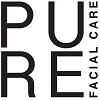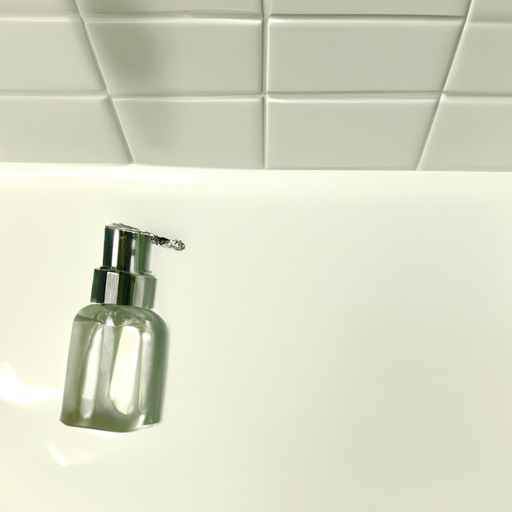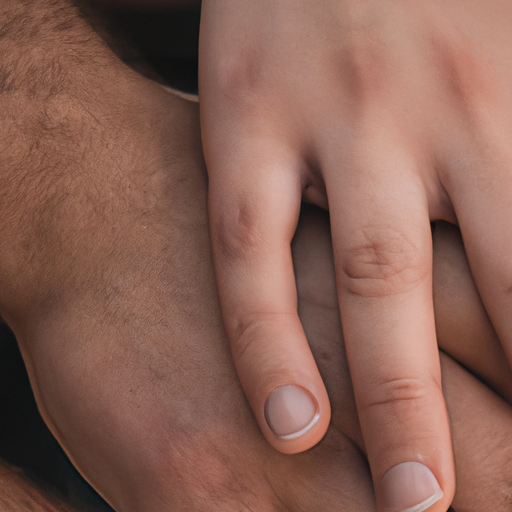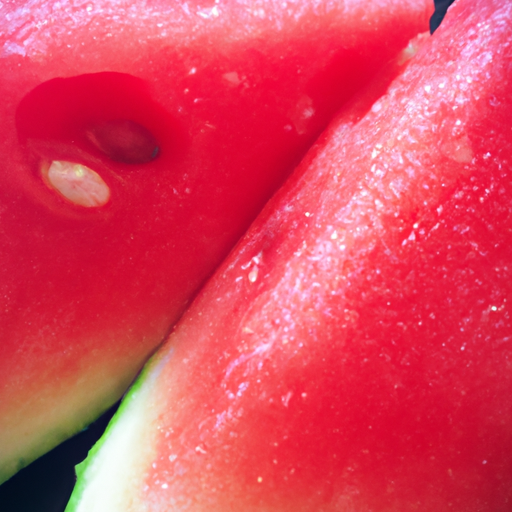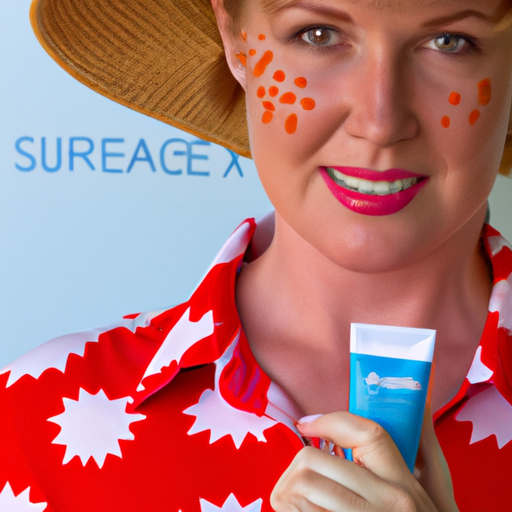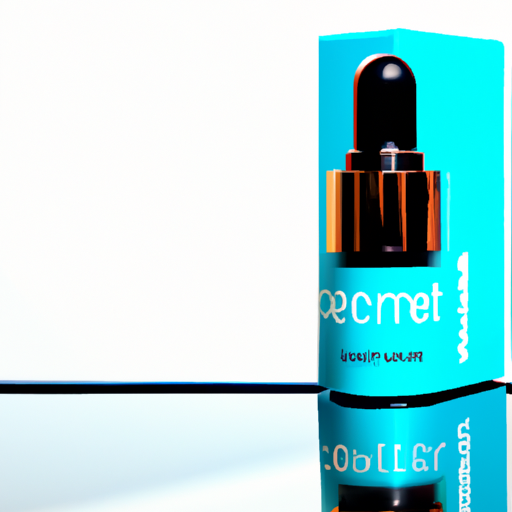Are you a man who is tired of dealing with under-eye bags and puffiness? If so, you’re not alone. Many men struggle with these common issues, but the good news is that there are ways to address and reduce their appearance. From simple lifestyle changes to targeted skincare products, you can take control of your under eye bags and puffiness and regain a more refreshed and youthful appearance. In this article, we will explore some effective strategies that can help you address and combat under eye bags and puffiness, ultimately giving you the confidence to look and feel your best.
Table of Contents
ToggleUnderstanding Under-Eye Bags and Puffiness
Under-eye bags and puffiness are common concerns that many individuals, both men and women, experience at some point in their lives. These conditions can make you appear tired and older than you actually are. But what exactly causes under-eye bags and puffiness? Let’s delve into the factors that contribute to these issues and explore how men can address them effectively.
What causes under-eye bags and puffiness?
Under-eye bags and puffiness can be caused by a variety of factors. One primary cause is the natural ageing process. As we age, the skin around our eyes becomes thinner, and the muscles and tissues that support the area weaken. This can lead to the accumulation of fat and fluid, resulting in the appearance of bags and puffiness.
Other common causes of under eye bags and puffiness include genetics, allergies, fluid retention, lack of sleep, and poor dietary habits. Excessive consumption of salty foods, alcohol, and dehydration can exacerbate these conditions. Additionally, certain medical conditions, like thyroid disorders and sinus problems, can contribute to the development of under eye bags and puffiness.
Why do men develop under eye bags and puffiness?
While under eye bags and puffiness can affect both men and women, men tend to develop them for specific reasons. Men have thicker skin and larger blood vessels around the eyes compared to women. This can make the under-eye area more susceptible to swelling and puffiness. Furthermore, men often have higher levels of testosterone, which can lead to increased fat storage and fluid retention in this area.
Men also face unique lifestyle factors that can contribute to the development of under eye bags and puffiness. Factors such as excessive stress, lack of sleep due to work or personal commitments, and poor dietary choices can all play a role in the appearance of under eye bags and puffiness in men.
The impact of lifestyle factors on under eye bags and puffiness
Lifestyle factors play a significant role in the development and exacerbation of under eye bags and puffiness. By adopting a few preventive measures and making positive changes to your daily routine, you can reduce the appearance of under eye bags and puffiness and promote overall skin health.
Maintaining a healthy lifestyle
Maintaining a healthy lifestyle is crucial for combating under eye bags and puffiness. This includes consuming a balanced diet that is rich in fruits, vegetables, whole grains, lean proteins, and healthy fats. A diet high in antioxidants and omega-3 fatty acids can help reduce inflammation and improve skin elasticity.
Regular exercise is also essential, as it improves blood circulation, reduces fluid retention and prevents under-eye bags from forming. Aim for at least 30 minutes of exercise most days of the week, and incorporate activities that promote cardiovascular health and overall fitness.
Protecting the delicate under eye area
The skin around the eyes is delicate and requires special care. Protecting this area from external aggressors, such as harsh sunlight and environmental pollutants, can help prevent the development of under eye bags and puffiness.
Wearing sunglasses with UV protection is an effective way to shield your eyes from harmful sun rays. Look for sunglasses that provide maximum coverage and have a high level of UV protection. Additionally, wearing hats or visors when spending prolonged periods under direct sunlight can provide an extra layer of protection.
Getting enough sleep
Adequate sleep is essential for maintaining healthy skin and preventing under-eye bags and puffiness. Lack of sleep can cause fluid to pool under the eyes, resulting in puffiness. Aim for 7-9 hours of quality sleep each night to allow your body and skin to regenerate and repair itself.
Establishing a regular sleep routine, practicing good sleep hygiene, and creating a soothing environment conducive to sleep can all contribute to better sleep quality. Avoiding electronic devices before bed, keeping the bedroom cool and dark, and engaging in relaxation techniques, such as reading or meditation, can promote a restful night’s sleep.
Reducing stress levels
Stress can have a negative impact on your overall health, including the appearance of your skin. Chronic stress can lead to hormonal imbalances, poor sleep quality, and unhealthy coping mechanisms such as smoking and excessive alcohol consumption. These factors can all contribute to the development of under-eye bags and puffiness.
Finding healthy ways to manage stress, such as practicing mindfulness techniques, engaging in regular physical activity, and seeking support from friends and family, can help reduce stress levels and prevent the worsening of under eye bags and puffiness.
Effective Skincare Routine
Beyond lifestyle changes, incorporating an effective skincare routine tailored for the under-eye area is key to minimising the appearance of under-eye bags and puffiness. Here are some tips to help you achieve a healthy and rejuvenated under eye area.
Choosing the right eye cream or gel
Using a high-quality eye cream or gel specifically formulated to target under-eye bags and puffiness can make a significant difference in your skincare routine. Look for products that contain ingredients like caffeine, hyaluronic acid, peptides, and antioxidants.
Caffeine helps constrict blood vessels, reducing puffiness, while hyaluronic acid hydrates and plumps the skin. Peptides can help stimulate collagen production, improving skin elasticity, and antioxidants protect the skin from free radicals, preventing further damage.
When applying eye cream or gel, use gentle tapping motions with your ring or pinky finger to avoid pulling or tugging on the delicate skin around the eyes.
Using cold compresses
Cold compresses can help constrict blood vessels, reduce swelling, and temporarily tighten the under eye area. To create a cold compress, soak a clean washcloth or eye mask in cold water or, for an extra soothing effect, chill chamomile tea. Place the compress on your closed eyes for 10–15 minutes daily.
Practicing gentle massage techniques
Gentle massage techniques can improve lymphatic drainage and stimulate blood circulation, reducing the appearance of under eye bags and puffiness. Using your ring or pinky finger, gently tap the under eye area in a circular motion, moving from the inner to the outer corner of the eyes. Repeat this technique for a few minutes each day.
importance of proper hydration
Proper hydration is essential for maintaining healthy skin, including the under eye area. Drinking an adequate amount of water throughout the day helps flush out toxins and reduces the likelihood of fluid retention and bloating, which can exacerbate under eye bags and puffiness.
Make it a habit to carry a reusable water bottle with you and drink water consistently throughout the day. Additionally, incorporating hydrating foods such as watermelon, cucumber, and celery into your diet can provide additional moisture and promote overall skin health.
Natural Remedies
In addition to a comprehensive skincare routine, natural remedies can be effective in reducing under eye bags and puffiness. These remedies, readily available at home, offer a gentle and cost-effective alternative to commercial products.
Cucumber slices
Cucumber slices have long been used as a natural remedy for reducing under eye bags and puffiness. The natural astringent properties of cucumbers help constrict blood vessels and reduce swelling. Chill cucumber slices in the refrigerator for a few minutes and place them on your closed eyes for 10–15 minutes. Repeat daily for best results.
Tea bags
Tea bags, particularly those containing caffeine, can help reduce under-eye bags and puffiness. Steep two tea bags in hot water for a few minutes, then allow them to cool. Place a tea bag on each eye for 10–15 minutes. The caffeine and tannins in the tea can help constrict blood vessels and reduce inflammation.
Chilled spoons
A simple and readily available remedy for under eye bags is using chilled spoons. Place metal spoons in the refrigerator for several minutes, then gently press the rounded side of the spoon against your under eye area for a cooling and refreshing effect. This can help reduce swelling and temporarily tighten the skin.
Aloe vera gel
Aloe vera gel has soothing and anti-inflammatory properties that can help reduce under eye bags and puffiness. Apply a small amount of pure aloe vera gel to the under eye area and gently massage it with your ring or pinky finger. Leave it on for 10–15 minutes before rinsing off with cool water.
Potato slices
Potato slices contain enzymes and antioxidants that can help reduce puffiness and inflammation. Slice a raw potato into thin rounds, refrigerate them for a few minutes, and place them on your closed eyes for 10–15 minutes. The coolness of the potato slices will provide a refreshing sensation and help alleviate under eye bags and puffiness.
Professional Treatments
In some cases, natural remedies and skincare routines may not provide the desired results. In such instances, professional treatments administered by dermatologists or qualified professionals can help effectively address under eye bags and puffiness.
Blepharoplasty
Blepharoplasty is a surgical procedure that removes excess skin, fat, and muscle from the eyelids. It can be performed on the upper and lower eyelids to improve the appearance of under-eye bags and puffiness. This procedure is more invasive and requires a longer recovery time but can produce significant and long-lasting results.
Laser resurfacing
Laser resurfacing is a non-invasive procedure that uses lasers to improve the texture and appearance of the skin. It can help tighten the skin around the eyes, reduce under-eye bags, and stimulate collagen production. Laser resurfacing treatments may require multiple sessions to achieve optimal results.
Chemical peels
Chemical peels involve the application of a chemical solution to the skin, which exfoliates the top layers and promotes cell turnover. This can improve the appearance of under eye bags and puffiness by reducing pigmentation, tightening the skin, and stimulating collagen production. Chemical peels vary in intensity, and the appropriate type and strength should be determined by a professional.
Dermal fillers
Dermal fillers are injections that can fill in hollow areas under the eyes, reducing the appearance of under-eye bags and puffiness. These fillers often contain hyaluronic acid, a substance naturally found in the body that provides hydration and volume to the skin. Dermal filler treatments are temporary but can provide immediate and noticeable results with minimal downtime.
Micro-needling
Micro-needling, also known as collagen induction therapy, involves using a device with tiny needles to create controlled micro-injuries to the skin. This stimulates collagen and elastin production, improving skin texture and reducing the appearance of under-eye bags and puffiness. Multiple sessions may be required for optimal results.
Dietary and Nutritional Considerations
Diet plays a vital role in skin health, including the reduction of under eye bags and puffiness. Making certain dietary and nutritional considerations can help address these conditions effectively.
Reducing sodium intake
Excessive sodium consumption can contribute to fluid retention and bloating, leading to the development of under eye bags and puffiness. Minimise your intake of processed and packaged foods, as they often contain high levels of sodium. Instead, focus on fresh, whole foods and flavour your meals with herbs and spices instead of excess salt.
Increasing water consumption
Drinking an adequate amount of water is essential for maintaining overall skin health and minimising under eye bags and puffiness. Aim to drink at least 8–10 glasses of water per day to stay properly hydrated. Additionally, consuming water-rich foods such as watermelon, cucumber, and citrus fruits can provide additional hydration.
Including anti-inflammatory foods
Incorporating anti-inflammatory foods into your diet can help reduce under eye bags and puffiness. Foods rich in antioxidants, such as berries, leafy greens, turmeric, and walnuts, can help combat inflammation and support healthy skin. Omega-3 fatty acids found in fatty fish, flaxseeds, and chia seeds can also help reduce inflammation.
Getting sufficient vitamins and minerals
Certain vitamins and minerals play a crucial role in maintaining healthy skin and reducing under eye bags and puffiness. Vitamin C helps promote collagen production, vitamin K aids in blood clotting and circulation, and vitamin E provides antioxidant benefits. Additionally, minerals like zinc and selenium support overall skin health. Ensure your diet includes a variety of fruits, vegetables, nuts, seeds, and lean proteins to obtain these essential nutrients.
Keeping Allergies in Check
Allergies can contribute to the development of under eye bags and puffiness, particularly if you have a history of allergies or suffer from seasonal allergies. By taking appropriate measures, you can keep allergies in check and minimize their effects on your under eye area.
Identifying and avoiding allergens
Identifying and avoiding allergens that trigger your allergy symptoms is crucial for managing under eye bags and puffiness. Common allergens include pollen, pet dander, dust mites, and certain foods. Take note of when your symptoms are most severe and try to minimize exposure to potential triggers.
Using antihistamines
Antihistamines can provide relief from allergy symptoms and help reduce under eye bags and puffiness caused by allergies. Over-the-counter antihistamines, such as loratadine or cetirizine, can help alleviate symptoms. However, consult with a healthcare professional before starting any new medication to determine the appropriate dosage and potential side effects.
Rinsing eyes regularly
Rinsing your eyes regularly with a saline solution can help flush out allergens and reduce under eye bags caused by allergies. Use commercially available sterile saline eye drops or prepare a homemade saline solution by mixing salt and sterilized water. Gently rinse your eyes with the solution to cleanse and soothe the under eye area.
Consulting an allergist
If your under eye bags and puffiness persist despite efforts to manage your allergies, it may be beneficial to consult an allergist. Allergists specialize in diagnosing and treating allergies and can provide personalized recommendations and treatments to alleviate your symptoms and reduce the impact on your under eye area.
Eye Exercises and Massage Techniques
Regular eye exercises and gentle massage techniques can help improve blood circulation, reduce tension, and alleviate under eye bags and puffiness. Here are a few simple exercises and techniques you can incorporate into your daily routine:
Palming
Palming is a relaxation technique that can help relieve eye strain and improve blood circulation around the eyes. Rub your hands together vigorously to generate warmth, then gently cup your palms over your closed eyes. Close your eyes and relax, visualizing darkness for a few minutes. Repeat as needed throughout the day to provide relaxation and rejuvenation for your eyes.
Blinking exercises
Blinking exercises can help lubricate the eyes, reduce dryness, and improve eye fatigue. Sit or stand in a relaxed position and blink rapidly for 20 seconds, then close your eyes for 20 seconds. Repeat this sequence five times. Performing blink exercises regularly can help refresh your eyes and reduce under eye bags caused by eye strain.
Eye rolling
Eye rolling exercises help improve blood circulation and alleviate tension around the eyes. Start by looking up as far as you comfortably can, then slowly roll your eyes in a clockwise direction. Complete five rotations, then reverse direction and roll your eyes counterclockwise for another five rotations. Practice eye rolling exercises daily to maintain healthy blood flow and reduce under eye bags and puffiness.
Gentle tapping
Gently tapping the under eye area can help stimulate blood circulation and reduce fluid retention. Using your ring or pinky finger, lightly tap the under eye area in a gentle and rhythmic motion. Start from the inner corner of the eye, moving towards the outer corner. Repeat this tapping technique for a few minutes, focusing on the areas with under eye bags or puffiness.
Importance of Sun Protection
Protecting your under eye area from the harmful effects of the sun is crucial for preventing the development of under eye bags and puffiness, as well as minimizing their appearance. Here are some essential tips to keep in mind:
Using sunglasses with UV protection
Invest in a good pair of sunglasses that provide both UVA and UVB protection. Look for sunglasses labeled with a high level of UV protection, ideally blocking out 99-100% of UV rays. Wearing sunglasses with proper UV protection shields your eyes and the surrounding skin from the damaging effects of the sun’s rays.
Applying sunscreen around the eyes
Apply a broad-spectrum sunscreen with at least SPF 30 to the under eye area daily. Choose a sunscreen specifically formulated for the face and gentle enough for the delicate skin around the eyes. Avoid getting sunscreen into your eyes by applying it carefully and sparingly, using gentle dabbing motions with your ring or pinky finger.
Wearing hats to shield from direct sunlight
In addition to sunglasses and sunscreen, wearing hats or visors with a wide brim can provide extra protection for your eyes and under eye area. Hats help shield your face from direct sunlight, reducing the risk of sunburn, premature aging, and the appearance of under eye bags and puffiness. Opt for hats with a brim wide enough to cover your forehead, temples, and the sides of your face.
Consulting a Dermatologist
While home remedies and lifestyle changes can often improve the appearance of under eye bags and puffiness, there may be instances where professional guidance is necessary. Consulting a dermatologist can help you understand the underlying causes of your concerns and receive tailored recommendations based on your individual needs.
When to seek professional advice
If your under eye bags and puffiness persist despite implementing preventive measures and utilizing home remedies, it may be time to seek professional advice. A dermatologist can thoroughly assess your skin, identify any underlying medical conditions, and discuss suitable treatment options based on your specific situation. They can provide expert advice and guidance to help you achieve your desired results.
Medical treatments for severe cases
In severe cases where under eye bags and puffiness are significantly impacting your quality of life, a dermatologist may recommend medical treatments. These treatments may include prescription-strength topical creams, eye serums, or advanced cosmetic procedures.
Undergoing medical treatments should always be done under the supervision of a qualified professional. Discuss the potential risks, benefits, and expected outcomes with your dermatologist to determine the most suitable course of action for your specific needs.
Tailored skincare recommendations
A dermatologist can provide personalized skincare recommendations to address your under eye bags and puffiness. They may recommend specific skincare products, professional-grade treatments, or prescribed medications to help improve the appearance of your under eye area. These tailored recommendations can help you achieve optimal results and maintain the health and vitality of your skin.
In conclusion, under eye bags and puffiness can be effectively addressed through a combination of preventive measures, a comprehensive skincare routine, natural remedies, professional treatments, dietary considerations, allergy management, eye exercises, sun protection, and professional guidance when needed. By implementing these strategies, you can reduce the appearance of under eye bags and puffiness, achieve healthier skin, and restore a more youthful and refreshed appearance. Remember, consistency and patience are key when it comes to achieving desired results, so embrace these tips as part of your daily routine and enjoy the transformative benefits they can bring to your under eye area.
